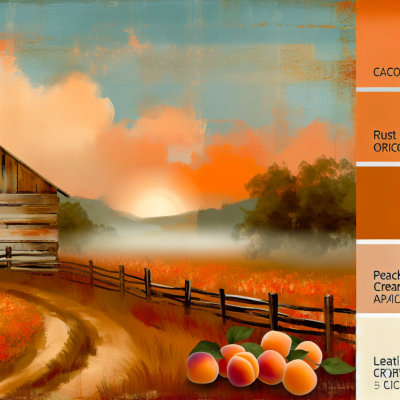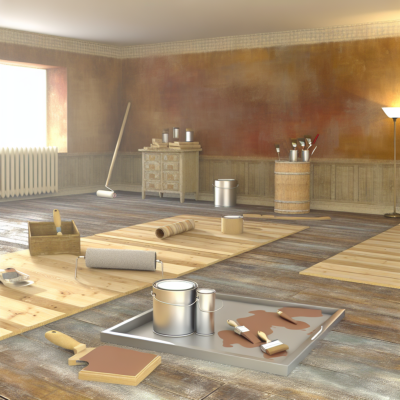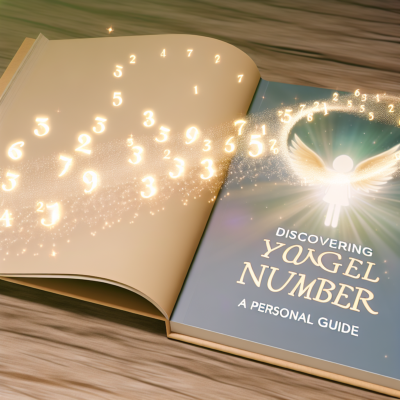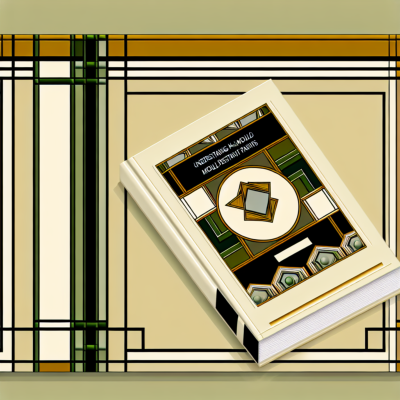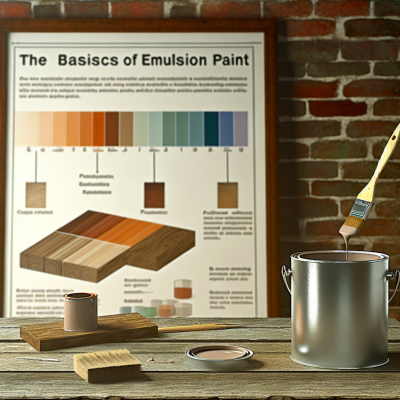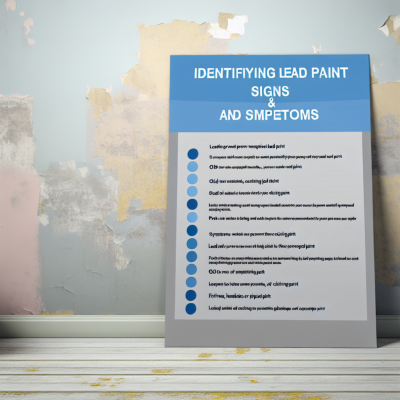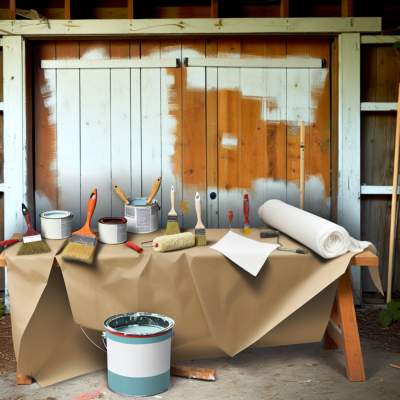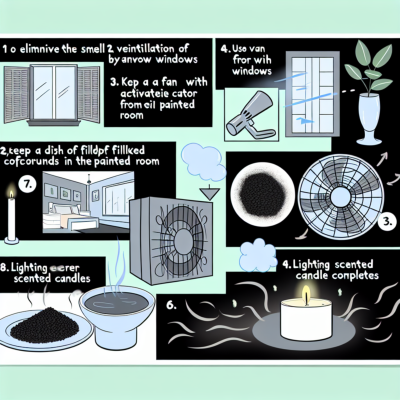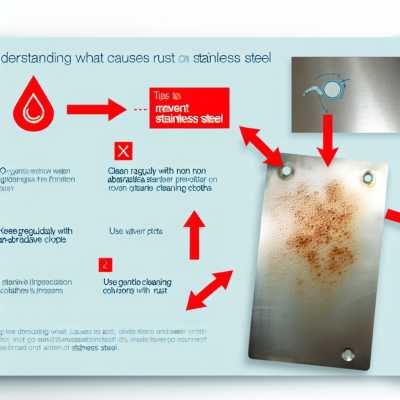Bird intrusions into houses are a common nuisance that homeowners must deal with. Birds may fly or nest inside houses while searching for food or shelter, causing issues like property damage, health hazards from droppings, and disruption to daily life from noise. Getting a bird out of your house humanely or preventing one from entering in the first place involves techniques like opening doors and windows, using nets, visual deterrents, or calling wildlife professionals for difficult situations. Understanding why birds enter houses and how to remove them or install deterrents can lead to more peaceful coexistence with our feathered neighbors.
It is important to understand the reasons behind bird intrusions in residential spaces. Birds are attracted to these areas primarily because of the abundance of food and shelter. Residential spaces often provide easy access to food sources such as garbage cans, bird feeders, and outdoor dining areas. Additionally, trees, rooftops, and balconies offer suitable nesting spots for birds.
While some bird intrusions may seem harmless, they can have serious consequences. Birds can cause damage to property by building nests in chimneys or gutters, leading to clogs and potential fire hazards. Their droppings can also be corrosive and unsightly, damaging the exterior of buildings and vehicles. Furthermore, certain bird species can be aggressive and pose a threat to human safety, especially during nesting season.
To navigate bird intrusions in residential spaces, it is crucial to implement effective and humane bird control measures. This can include installing bird spikes or netting in areas where birds frequently gather, using visual deterrents such as scarecrows or reflective tape, and providing alternative food sources away from residential areas.
It is also essential to educate residents about the importance of bird conservation and responsible bird feeding practices. Encouraging the use of bird feeders that are designed to minimize spillage and prevent access by unwanted bird species can help mitigate bird intrusions. Additionally, creating bird-friendly habitats through the planting of native vegetation and the installation of birdhouses can attract birds to designated areas away from residential spaces.
By understanding the reasons behind bird intrusions and taking proactive measures to address them, we can coexist peacefully with our feathered neighbors while ensuring the safety and comfort of our residential spaces.
Safe Methods for Removing Birds from Indoor Spaces

When birds find their way into indoor spaces, it can be a cause for concern. Not only can they create a mess, but they can also pose a risk to the health and safety of occupants. It is important to remove birds from indoor spaces in a safe and humane manner. Here are some methods that can be used:
- Open Doors and Windows: If the bird is in a room with open doors or windows, try opening them wider to create a larger exit route. This method allows the bird to find its way out on its own.
- Use Nets or Blankets: If the bird is unable to find its way out, gently approach it with a net or a blanket. Carefully place the net or blanket over the bird and gently scoop it up. This method helps to contain the bird and prevent it from flying around and causing further damage.
- Use Deterrents: Another method is to use bird deterrents such as noise makers or visual scare devices. These can be placed near the bird to encourage it to leave the indoor space. It is important to choose deterrents that are safe for both birds and humans.
- Seek Professional Help: If the bird is injured, aggressive, or difficult to remove, it is best to seek professional help. There are wildlife control services that specialize in the safe removal of birds from indoor spaces. They have the necessary tools and expertise to handle the situation effectively.
It is important to note that capturing and releasing birds without proper knowledge and experience can be harmful to both the bird and the person attempting to remove it. It is always recommended to consult professionals when dealing with bird intrusions in indoor spaces.
How do I get rid of birds around my house?
If you're dealing with bird intrusions around your house, there are several effective methods you can employ to deter them. Here are a few strategies to consider:
| 1. Bird Spikes | Installing bird spikes on ledges, rooftops, and other areas where birds tend to perch can prevent them from landing and roosting. These spikes create an uncomfortable surface for birds, discouraging them from settling in those areas. |
| 2. Bird Netting | Using bird netting is an effective way to physically block birds from accessing certain areas. It can be installed over gardens, balconies, and other vulnerable spaces, preventing birds from causing damage or leaving droppings. |
| 3. Visual Deterrents | Utilizing visual deterrents, such as reflective tape, scare balloons, or predator decoys, can help to scare birds away from your property. These visual cues make birds feel threatened, encouraging them to find a more secure location. |
| 4. Sonic Repellents | Sonic repellents emit high-frequency sounds that are uncomfortable to birds, but inaudible to humans. These devices can be effective in deterring birds from your property without causing harm. |
| 5. Proper Waste Management | Ensuring that garbage bins are properly sealed and trash is disposed of regularly can help to reduce the availability of food sources for birds. By eliminating their food supply, you can discourage birds from frequenting your property. |
Remember, it's important to choose methods that are humane and environmentally friendly when dealing with bird intrusions. If the problem persists, it may be beneficial to consult with a professional wildlife removal service for further assistance.
How do you safely remove a bird?
If you find a bird intruding in your residential space, it is important to handle the situation carefully and ensure the bird's safety. Here are some steps to safely remove a bird:
1. Stay calm and assess the situation: Before taking any action, observe the bird's behavior and determine if it is injured or trapped. Assess the potential risks involved and make sure to prioritize safety.
2. Open windows and doors: If the bird is indoors, open windows and doors to provide an exit route. Create a clear path for the bird to find its way out. Turn off any fans or other potential hazards that may disorient or harm the bird.
3. Create a safe space: If the bird is injured or unable to fly, create a safe space for it. Use a large cardboard box or a pet carrier lined with a towel. Make sure the container has proper ventilation and is placed in a quiet and secure area away from pets and children.
4. Approach the bird gently: If you need to handle the bird, approach it slowly and gently. Use a towel or gloves to protect yourself and avoid direct contact with the bird. Remember, birds can be easily stressed, so handle them with care.
5. Release the bird: Once you have safely contained the bird or guided it towards an open exit, carefully release it outside. Make sure there are no immediate dangers or predators nearby. Allow the bird to fly away on its own, as it knows best how to navigate its surroundings.
911 angel number meaning
6. Seek professional help if needed: If you encounter a bird species that is protected or endangered, or if the bird is injured and requires medical attention, contact your local wildlife rehabilitation center or animal control for further assistance.
Remember, when dealing with bird intrusions, it is important to prioritize the bird's safety and well-being. By following these steps, you can safely remove a bird from your residential space and help it return to its natural habitat.
What is the most effective bird deterrent?
When it comes to bird intrusions in residential spaces, finding an effective deterrent is crucial. There are several options available, but some are more effective than others.
One of the most effective bird deterrents is the use of visual deterrents. Birds are highly visual creatures, and certain patterns or objects can scare them away. Reflective materials, such as shiny tape or foil, can be hung around the area to create reflections and movement that birds find intimidating. Another effective visual deterrent is predator decoys, such as owls or hawks. These decoys can create the illusion of a predator presence and deter birds from approaching.
Another effective bird deterrent is sound devices. Birds are sensitive to certain noises and can be scared away by loud, unexpected sounds. Sonic bird repellents emit high-pitched sounds that are unpleasant to birds but inaudible to humans. These devices can be set up in the area to deter birds from entering or roosting. Another option is using bird distress calls, which can mimic the sounds of injured or distressed birds and signal danger to other birds in the area.
Physical barriers are also highly effective in deterring birds. Netting or mesh can be installed over vulnerable areas to prevent birds from accessing them. This is particularly useful for areas such as balconies or rooftops where birds can build nests or cause damage. Spikes or wires can also be installed on ledges or surfaces where birds tend to roost, making it uncomfortable or impossible for them to land.
It's important to note that the effectiveness of bird deterrents can vary depending on the species of birds and the specific situation. Some birds may be more resilient to certain deterrents, or they may become habituated to them over time. It may be necessary to combine multiple deterrents or periodically change tactics to maintain effectiveness.
In conclusion, visual deterrents, sound devices, and physical barriers are all effective options for deterring birds from residential spaces. It's important to assess the specific bird intrusion problem and choose the most appropriate deterrent based on the situation.
Understanding the Significance of Birds Entering Your Home

Birds entering residential spaces can have various implications and understanding their significance is essential for homeowners. While birds may seem harmless, their presence can cause inconvenience and potential health hazards. By comprehending the reasons behind birds entering your home, you can take appropriate measures to mitigate their intrusion.
One significant reason for birds entering homes is the search for food and shelter. Residential areas often provide a convenient source of food, such as open garbage cans or bird feeders. Additionally, birds may seek shelter in attics, chimneys, or other openings in the house. Understanding these motivations can help homeowners identify potential entry points and take preventive measures to block them.
Another important factor to consider is the potential damage that birds can cause to your property. Birds can build nests in vents, chimneys, and gutters, leading to blockages and potential damage to the house's infrastructure. Their droppings can also corrode surfaces and pose health risks due to the presence of bacteria and parasites. Being aware of these risks can prompt homeowners to address bird intrusions promptly.
Furthermore, birds entering your home can disrupt your daily life. Their chirping, nesting activity, and constant presence can disturb your peace and tranquility. Additionally, birds may bring insects or mites into your home, creating further inconvenience and potential health issues for residents. By understanding the impact birds can have on your living environment, you can prioritize their removal or prevention.
To effectively deal with birds entering your home, it is crucial to seek professional assistance. Wildlife experts or pest control services can provide guidance on the best methods to safely remove or deter birds from your property. They can also help identify any underlying issues that may be attracting birds and suggest long-term solutions to prevent future intrusions.
| Significance of Birds Entering Your Home: |
|---|
| 1. Search for food and shelter |
| 2. Potential property damage |
| 3. Disruption to daily life |
| 4. Health risks and inconvenience |
What is the meaning of a bird flying into your home?
When a bird flies into your home, it can be a curious and puzzling event. Many people believe that birds are messengers from the spiritual realm and that their presence holds symbolic meaning.
In some cultures, a bird flying into your home is considered a sign of good luck and prosperity. It is believed that the bird brings positive energy and blessings into your life. This interpretation suggests that you are being visited by a divine force, and it is a reminder to stay positive and hopeful.
On the other hand, some people view a bird flying into their home as a bad omen or a sign of impending doom. They believe that it signifies a disruption in the natural balance and may bring misfortune or tragedy. This interpretation suggests that you need to be cautious and prepared for potential challenges or difficulties ahead.
Alternatively, some individuals see a bird flying into their home as a sign of a departed loved one trying to communicate with them. They believe that the bird is acting as a messenger, carrying a message or a spiritual presence from the other side. This interpretation provides comfort and a sense of connection with the spiritual realm.
It is important to note that the meaning of a bird flying into your home can vary depending on your cultural beliefs and personal experiences. Ultimately, the interpretation is subjective, and it is up to you to decide what meaning resonates with you the most.
What do birds mean spiritually?
Birds have long been associated with spirituality and are often seen as messengers from the divine. In many cultures and religions, birds are believed to hold symbolic meanings and represent different aspects of the human experience.
In Native American traditions, birds are seen as powerful spiritual guides and are believed to possess wisdom and knowledge. The sight of a bird or the sound of its song is often considered a message or sign from the spiritual realm.
In Christianity, birds are often associated with the Holy Spirit and are seen as symbols of peace, freedom, and divine intervention. The story of Noah's Ark, for example, includes the image of a dove carrying an olive branch, symbolizing hope and the end of suffering.
In Hinduism, birds are considered sacred and are associated with various deities. The peacock, for instance, is associated with the god Krishna and represents beauty, love, and grace. The Garuda, a mythical bird-like creature, is the vehicle of Lord Vishnu and is seen as a symbol of protection and power.
In Chinese culture, birds are believed to bring good luck and are often associated with prosperity, longevity, and happiness. The crane, in particular, is considered a symbol of immortality and is often depicted in art and literature.
Overall, birds have a deep spiritual significance in many cultures and are seen as messengers, symbols of divine presence, and guides on the spiritual path. Their grace, beauty, and ability to soar high in the sky have made them powerful symbols of freedom, hope, and transcendence.
Preventive Measures to Keep Birds Out of Houses
Dealing with bird intrusions in residential spaces can be a nuisance, but there are steps you can take to prevent them from entering your house. Here are some preventive measures you can implement:
- Install bird netting: Bird netting is a physical barrier that can be installed to cover openings such as windows, vents, and balconies. This prevents birds from entering these spaces while still allowing for ventilation.
- Seal cracks and gaps: Birds can enter houses through small cracks and gaps in walls, roofs, and windows. Inspect your property for any openings and seal them with caulk or weatherstripping to prevent bird access.
- Use bird spikes: Bird spikes can be placed on ledges, roofs, and other flat surfaces to deter birds from landing. These spikes make it uncomfortable for birds to perch, discouraging them from staying in the area.
- Install bird deterrents: There are various bird deterrents available, such as visual deterrents like scarecrows or reflective tape, and audible deterrents like ultrasonic devices or bird distress calls. These can help discourage birds from approaching your house.
- Keep food sources secured: Birds are attracted to food sources such as garbage bins, compost piles, and pet food. Make sure these areas are properly secured with lids or covers to prevent birds from accessing them.
- Trim trees and vegetation: If you have trees or vegetation close to your house, trimming them can prevent birds from perching or nesting near your property. This reduces the likelihood of bird intrusions.
- Remove bird nests: If you notice bird nests on your property, remove them as soon as possible. This will discourage birds from returning to the same location.
By implementing these preventive measures, you can significantly reduce the chances of bird intrusions in your residential spaces. Remember to always follow local regulations and guidelines when dealing with bird control.
What will keep birds away from the house?
If you're looking to keep birds away from your house, there are several effective methods you can try:
- Bird spikes: These can be installed on ledges, rooftops, or any other area where birds like to perch. The spikes make it uncomfortable for birds to land, discouraging them from staying in the area.
- Netting: Installing netting around areas where birds may enter, such as balconies or open windows, can prevent them from gaining access to your house.
- Visual deterrents: Hanging shiny objects, such as reflective tape or CDs, can create a visual deterrent for birds. The movement and reflections can scare them away.
- Ultrasonic devices: Ultrasonic devices emit high-frequency sounds that are unpleasant to birds, but inaudible to humans. These devices can be effective in keeping birds away from your house.
- Repellent sprays: There are bird repellent sprays available that can be applied to areas where birds may be a problem. These sprays create an unpleasant taste or odor for birds, deterring them from the area.
- Scare devices: Scare devices, such as owl decoys or bird scare balloons, can be effective in deterring birds. These devices mimic predators or create movement, scaring birds away.
It's important to note that different methods may work better for different bird species, so it may require some trial and error to find the most effective solution for your specific situation. Additionally, it's always best to consult with a professional or bird control expert to ensure you're using safe and humane methods to deter birds from your house.
What is a safe repellent for birds?
When it comes to dealing with bird intrusions in residential spaces, it is important to find a safe and effective repellent that does not harm the birds or the environment. There are several options available that can help deter birds from nesting or roosting in unwanted areas.
One safe repellent for birds is the use of visual deterrents. These can include reflective devices, such as shiny tape or metallic balloons, that create an illusion of movement and scare the birds away. Another option is to install bird scare devices, such as owl or hawk decoys, which can intimidate birds and prevent them from approaching the area.
Another safe repellent option is the use of sound deterrents. These can include ultrasonic devices that emit high-frequency sounds that are irritating to birds, but inaudible to humans. These devices can be effective in deterring birds without causing harm to them or the environment.
Physical barriers can also be used as a safe repellent for birds. These can include bird netting or spike strips, which prevent birds from landing or nesting in specific areas. These barriers are often used in outdoor spaces, such as gardens or balconies, to protect plants or furniture from bird damage.
It is important to note that while these repellents can be effective in deterring birds, it is essential to follow the instructions provided by the manufacturer and to regularly inspect and maintain the repellents to ensure their effectiveness. Additionally, it is recommended to consult with a professional pest control expert or bird control specialist to determine the best repellent option for the specific bird species and the area in question.
By choosing a safe repellent for birds, homeowners can effectively manage bird intrusions in their residential spaces without causing harm to the birds or the environment.
What can I use to keep birds from building nests?
If you're dealing with the problem of birds building nests in your residential spaces, there are several effective options available to help deter them:
1. Bird Spikes: Installing bird spikes on ledges, window sills, and other surfaces can prevent birds from landing and building nests. These spikes create an uncomfortable surface that makes it difficult for birds to perch.
2. Bird Netting: Bird netting is a physical barrier that can be installed over openings such as balconies, patios, and eaves to prevent birds from accessing these areas. It is a versatile and effective solution that does not harm the birds.
3. Bird Repellent Gel: Bird repellent gel can be applied to surfaces where birds tend to build nests. The sticky texture of the gel makes it unpleasant for birds to land and encourages them to find a different location for nesting.
4. Visual Deterrents: Using visual deterrents such as reflective tape, scare balloons, or predator decoys can help deter birds from nesting. These visual cues create a sense of danger and make the area less attractive to birds.
5. Ultrasonic Devices: Ultrasonic devices emit high-frequency sounds that are unpleasant to birds but not audible to humans. These devices can be installed to deter birds from nesting in specific areas without causing harm to them.
6. Regular Maintenance: Keeping your residential spaces clean and free from potential nesting materials, such as debris or loose branches, can discourage birds from building nests. Regular maintenance can make your property less appealing to birds.
It's important to note that different bird species may respond differently to these deterrents, so it may be necessary to try multiple methods or consult with a professional for the most effective solution.
Remember, it is essential to approach bird control in a humane and ethical manner, ensuring the safety and well-being of both birds and humans.
Handling Emergency Situations with Birds Indoors
When a bird finds its way indoors, it can create a potentially dangerous situation for both the bird and the occupants of the space. It is important to handle these emergency situations with caution and care.
1. Stay Calm: The first step in handling an emergency situation with a bird indoors is to remain calm. Birds can sense fear and panic, which may cause them to become more agitated.
2. Assess the Situation: Take a moment to assess the situation and determine the level of threat posed by the bird. Is it a small bird that can easily be caught and released, or is it a larger bird that may pose a greater challenge?
3. Protect Yourself: If the bird appears to be aggressive or is showing signs of distress, it is important to protect yourself from potential harm. Wear gloves and long sleeves to minimize the risk of scratches or bites.
4. Open Windows and Doors: If possible, open windows and doors to provide an exit route for the bird. Creating a clear path for the bird to escape will increase the chances of a successful release.
5. Dim the Lights: Birds are often attracted to bright lights, so dimming the lights in the room can help encourage the bird to move towards the open windows or doors.
6. Use a Towel or Blanket: If the bird is not showing any signs of aggression, you may be able to gently catch it using a towel or blanket. Approach the bird slowly and carefully wrap it in the fabric, being mindful of its wings and legs.
7. Release the Bird: Once you have safely captured the bird, take it outside and release it in a safe location away from the immediate vicinity of the building. Ensure that there are no predators or other potential threats nearby.
8. Seek Professional Help: If you are unable to safely capture or release the bird, or if the bird appears to be injured, it is important to seek professional help. Contact a local wildlife rescue organization or animal control for assistance.
Remember, handling emergency situations with birds indoors requires patience, caution, and compassion. By following these guidelines, you can help ensure the safety of both the bird and the occupants of the space.
Bird intrusions into houses can certainly cause inconveniences and even potential hazards, but there are humane solutions available. By understanding what attracts birds to residential spaces and installing physical barriers or deterrent devices , homeowners can reduce or prevent issues. If a bird does become trapped indoors, opening exits or carefully capturing and releasing it can resolve the situation. Occasional bird visitors can be prevented from becoming permanent residents with some simple modifications. Implementing these practical and ethical bird control measures allows us to peacefully and safely coexist with these free-spirited creatures that add beauty to our outdoor spaces.
Read more:
- How to paint aluminium
- open a can without a can opener
- mdf paint
- how to get slime out of clothes
- how to get rid of paint smell
- how to get water out of iphone
- pinata ideas
- how to get sunscreen out of fabric
- things to do in summer
- washing soda vs baking soda
- paint peeling in bathroom
- paint for upvc doors
- mould resistant paint
- painting after removing wallpaper
- things to do as a couple
- sandpaper grades
- baking soda and vinegar cleaning
- how to hack key fob doors apartment
- how to paint a garage door
- can you paint laminate floors
- oil based paint for walls
- what is emulsion paint
- how to clean gloss paint brushes
- laundry detergent substitute
- how to antique a mirror
- how to remove rust from stainless steel
- how many fixer upper families still live in their homes
- apple tablet with pen
- how to clean white fabric shoe
- painting pine furniture
- how to test for lead paint
- top selling vintage items on etsy
- best places to live in texas
- The Magnificent Waco Castle
- how to balance a ceiling fan

